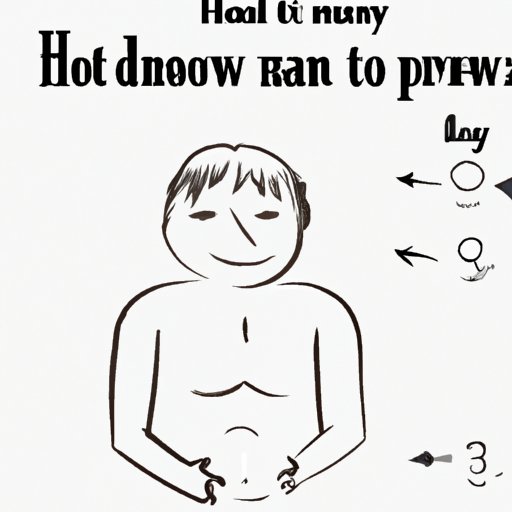Introduction
Drawing a person can be challenging for many beginners. It requires a combination of imagination, observation, and practice to create a realistic or stylized portrayal of the human form. However, it is not as intimidating as many people make it out to be. This article will offer a step-by-step guide, tips and techniques, and practical advice on how to master the art of drawing people.
A Step-by-Step Guide: How to Draw a Person
Start with the basic shapes and construction lines to create a foundation for your drawing. The head, torso, and limbs can be simplified as ovals, rectangles, and circles. Then, add more details such as facial features, hair, clothing, and accessories. Don’t forget to pay attention to the proportions and angles to create a natural and dynamic pose. Lastly, refine your lines, shadows, and highlights to give your drawing depth and character. Remember, practice makes perfect, so don’t be afraid to make mistakes and experiment with different styles.
Mastering the Art of Drawing: Tips and Techniques for Drawing People
To improve your drawing skills, it is crucial to understand proportion, perspective, and accuracy. For instance, the head is approximately one-seventh of the body height, and the eyes are halfway between the top of the head and the chin. Also, pay attention to the light source and the direction of the shadows to create realistic shading. Texture and contrast can enhance the visual impact of your drawings, whether you’re using pencils, markers, or digital tools. Finally, context and composition can add a storytelling element to your drawings. Consider the background, foreground, depth, and framing to create a dynamic and engaging scene.
The Anatomy of Drawing: Understanding the Human Form
Human anatomy is the foundation of drawing people. Understandably, it can be overwhelming to learn the names and functions of all the body parts. However, you only need to focus on the essential ones such as the head, neck, spine, ribcage, pelvis, arms, and legs. These parts dictate the overall posture, balance, and movement of the body. Knowing their structure and function can help you create more realistic and anatomically correct characters. For example, the deltoid muscle connects the shoulder to the arm and is visible when the arm is raised or flexed.
From Stick Figures to Realistic Portraits: Techniques for Drawing People
Drawing styles vary from simplistic to hyper-realistic, depending on the desired effect. For instance, stick figures or chibi characters are cute and easy to draw, while realistic portraits require more time and skill. Manga or anime-style drawing often exaggerates the eyes and hair to convey emotions and personality. In comparison, cartoony or caricature-style emphasizes the unique characteristics of the subject, such as their facial features or habits. Each style has its pros and cons, and it’s up to you to find the one that suits your preference and skill level.
Breaking Down the Basics: How to Start Drawing People
The best way to start drawing people is to begin with the basics. First, you should invest in quality pencils, paper, erasers, and sharpeners. Then, find a comfortable and well-lit space to draw. Next, practice drawing simple shapes and objects before moving onto more complex forms. Try to draw from life, photos, or references to observe how different body parts interact and move. Finally, don’t be afraid to ask for feedback from other artists or participate in drawing challenges or classes to improve your skills and get inspired.
Conclusion
To wrap up, drawing people is a fascinating and rewarding skill to learn. With patience, observation, and practice, anyone can create a beautiful or quirky representation of the human form. Whether you prefer to draw realistic portraits or cartoon characters, the techniques and tips provided in this article can help you enhance your drawing skills and creativity. Remember to have fun and enjoy the process of improving your craft, and don’t forget to share your artwork with the world.
